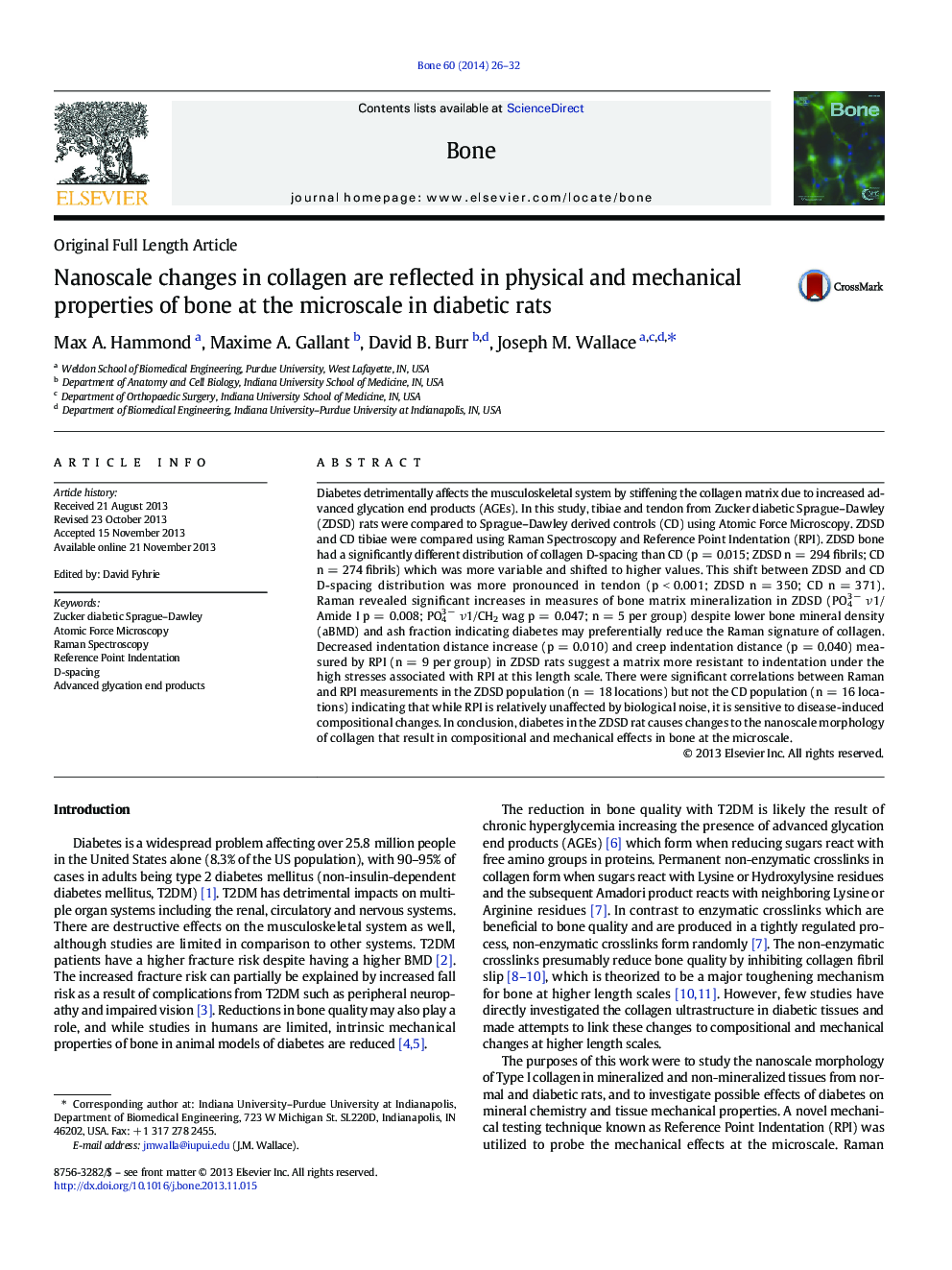| Article ID | Journal | Published Year | Pages | File Type |
|---|---|---|---|---|
| 5890409 | Bone | 2014 | 7 Pages |
â¢Multiscale analysis of changes in diet-induced type 2 diabetes in rats.â¢Atomic Force Microscopy, Raman Spectroscopy, Reference Point Indentation used.â¢Nanoscale morphology, mineral:matrix ratios, microscale mechanics altered.â¢Colocalized Raman and Reference Point Indentation were significantly correlated.â¢Mineral:matrix changes reflect stiffening of matrix, possibly due to glycation.
Diabetes detrimentally affects the musculoskeletal system by stiffening the collagen matrix due to increased advanced glycation end products (AGEs). In this study, tibiae and tendon from Zucker diabetic Sprague-Dawley (ZDSD) rats were compared to Sprague-Dawley derived controls (CD) using Atomic Force Microscopy. ZDSD and CD tibiae were compared using Raman Spectroscopy and Reference Point Indentation (RPI). ZDSD bone had a significantly different distribution of collagen D-spacing than CD (p = 0.015; ZDSD n = 294 fibrils; CD n = 274 fibrils) which was more variable and shifted to higher values. This shift between ZDSD and CD D-spacing distribution was more pronounced in tendon (p < 0.001; ZDSD n = 350; CD n = 371). Raman revealed significant increases in measures of bone matrix mineralization in ZDSD (PO43 â ν1/Amide I p = 0.008; PO43 â ν1/CH2 wag p = 0.047; n = 5 per group) despite lower bone mineral density (aBMD) and ash fraction indicating diabetes may preferentially reduce the Raman signature of collagen. Decreased indentation distance increase (p = 0.010) and creep indentation distance (p = 0.040) measured by RPI (n = 9 per group) in ZDSD rats suggest a matrix more resistant to indentation under the high stresses associated with RPI at this length scale. There were significant correlations between Raman and RPI measurements in the ZDSD population (n = 18 locations) but not the CD population (n = 16 locations) indicating that while RPI is relatively unaffected by biological noise, it is sensitive to disease-induced compositional changes. In conclusion, diabetes in the ZDSD rat causes changes to the nanoscale morphology of collagen that result in compositional and mechanical effects in bone at the microscale.
